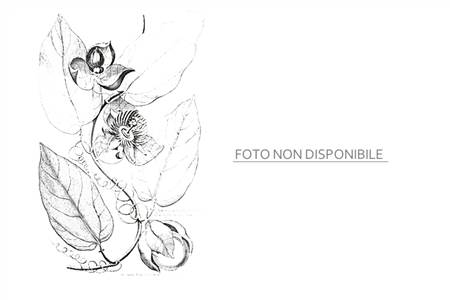
SUBGENUS: decaloba
SUPERSECTION: decaloba
SECTION: decaloba
GEOGRAPHICAL DISTRIBUTION OR ORIGIN:
Mountains of central Venezuela and eastern Colombia,
MINIMUM TEMPERATURE: 8 °C
IDEAL MINIMUM TEMPERATURE: 10 °C
ETYMOLOGY: Dedicated to the German botanist, collector and collector of plants
Wilhelm (Guillermo) Kalbreyer (1847-1912). He has made numerous research
trips to Colombia.
PHOTOGALLERY:
DESCRIPTION:
The slightly twisted leaf blade of P. kalbreyeri is leathery in texture and olive green in colour with ferruginous hues. A dense rust-coloured tomentosity also covers the stems, with a rounded quadrangular cross-section, making them iridescent.
The leaves are bilobate, usually moon-shaped, with the 2 lobes open at an obtuse angle. Sometimes they are narrower, and the leaf seems to want to stretch forward rather than open to the sides. In fully grown specimens, they can measure 10 cm in length and 9 cm in width and are equipped with two rows of glands placed parallel and internal to the lateral ribs.
The flowers, 4 cm in diameter, are pink, purple and white in colour. The petals and sepals, lanceolate in shape, are of a beautiful very light pink. The corona is composed of two series of filaments, the outermost of which is purple, the innermost white.
The spherical fruit has a diameter of 1.5 cm.
This plant lives at altitudes of up to about 2500 m in Venezuela and Colombia. It is not an easy plant to grow nor to get to flower, because it does not adapt well to a greenhouse environment. When spring arrives, it can be placed outdoors in full sun to facilitate the release of buds and, subsequently, the opening of the flowers.
Although it requires high atmospheric humidity, which is achieved by frequent spraying, it is extremely sensitive to overwatering, which causes lethal root rot.
It is cold resistant to around 7°C, a temperature that allows one to experience it outdoors, with protection, in the warmer Italian climatic zones. Elsewhere, it must be grown in pots.
P. kalbreyeri is difficult to propagate even from cuttings, so the best way to get new plants is from seed.